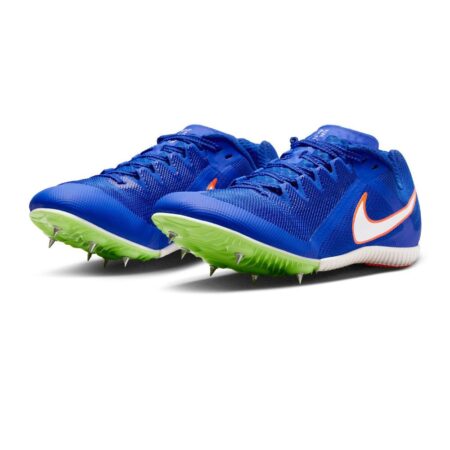In the world of competitive sports, the debate between specializing in a single discipline versus cultivating versatility across multiple distances remains as dynamic as ever. A groundbreaking new study published in Frontiers dives into this discussion by comparing the quality and outcomes of distance variety and specialization among swimmers and runners. By analyzing performance trends and training methodologies, the research sheds light on how athletes in these two demanding sports sprint to the top – whether through focused expertise or broad-ranging endurance. This article explores the key findings and their implications for athletes, coaches, and sports scientists aiming to unlock peak performance.
Sprinting Versus Endurance Exploring the Impact of Distance Variety on Athletic Performance
In the realm of competitive athletics, the debate between sprinting and endurance disciplines reveals more than just differences in distance-it highlights a complex interplay of physiological adaptations and training philosophies. Sprinters, whether in swimming lanes or on the track, prioritize explosive power, muscle fiber recruitment, and high-intensity bursts of energy. This specialization demands rigorous short-duration training regimes focused on strength, technique, and recovery. Conversely, endurance athletes develop enhanced cardiovascular efficiency and muscular stamina through sustained, moderate-intensity efforts, accommodating the metabolic needs required for prolonged performances.
Examining the impact of distance variety exposes how multi-distance competitors navigate these divergent demands. Studies indicate that while runners may comfortably transition between middle-distance events like 800m and 1500m, swimmers often face greater physiological challenges when shifting from sprint to distance events due to stroke mechanics and energy system utilization. Below is a comparative overview illustrating core differences in performance attributes and training emphases between sprint and endurance athletes across these two sports:
| Aspect | Sprinting (Swimming & Running) | Endurance (Swimming & Running) |
|---|---|---|
| Energy System | ATP-PCr, Anaerobic Glycolysis | Aerobic Metabolism |
| Muscle Fiber Type | Fast-twitch (Type II) | Slow-twitch (Type I) |
| Training Focus |
|
|
| Performance Outcome | Maximal speed and acceleration | Sustained pace and fatigue resistance |
Specialization Strategies in Swimming and Running How Focus Shapes Competitive Success
In the competitive arenas of swimming and running, athletes often face the strategic choice between embracing versatility or honing in on specialization. Swimmers, for example, frequently engage in varied distances and strokes, cultivating a broad skill set that can adapt to multiple events. This diversity not only enhances their endurance and technique but also maximizes medal opportunities across styles such as freestyle, butterfly, and backstroke. Conversely, runners tend to benefit more from concentrated training focused on a specific distance range, be it sprinting or long-distance. The physiological demands of running require precise adaptations – explosive power for the 100m dash versus sustained energy efficiency in marathons – prompting many athletes to commit early to their specialty for competitive edge.
The differing nature of specialization strategies can be summarized in the following overview:
| Aspect | Swimming | Running |
|---|---|---|
| Distance Variety | High; competitors often race across sprint, middle, and distance events | Low; athletes generally focus on sprint, middle-distance, or long-distance exclusively |
| Technique Diversity | Multiple strokes demand versatile skills | Single style, but technique varies by distance |
| Physiological Focus | Balance between aerobic and anaerobic conditioning | Predominantly specialized for either anaerobic sprint power or aerobic endurance |
| Competitive Success Factor | Adaptability across events | Maximized performance through focused specialization |
Ultimately, the pathway to elite success in these sports reveals the intricate dance between broad capacity and targeted refinement. While swimming rewards adaptive skillsets capable of conquering varied distances and strokes, running’s unique physiological demands push athletes toward sharp, distance-specific specialization. Coaches and competitors alike continue to balance these strategic choices, shaping training methodologies that best align with the physical and mental demands integral to their event portfolios.
Maximizing Potential Recommendations for Balancing Training Diversity and Specialization
Striking the right balance between training variety and specialization is crucial for athletes aiming to optimize their performance across different distances. While runners often diversify their regimens by integrating sprints, middle-distance, and endurance workouts, swimmers tend to specialize earlier due to the technical demands of their strokes. Experts recommend incorporating cross-disciplinary drills that maintain neuromuscular engagement and prevent early burnout, allowing athletes to build a versatile foundation before focusing on their primary event. This approach not only enhances overall athletic prowess but also reduces injury risks associated with repetitive strain. Key strategies include:
- Structured periodization cycles mixing diverse intensity levels
- Inclusion of complementary strength and flexibility training
- Regular monitoring of adaptation indicators to avoid overtraining
- Early exposure to competitive variety to foster mental resilience
To illustrate these principles, the table below summarizes recommended training emphasis percentages for runners and swimmers across different phases of their season. Notice how runners maintain a broader spectrum of distance work, whereas swimmers allocate larger blocks to stroke-specific specialization as the season advances.
| Training Phase | Runners (%) | Swimmers (%) |
|---|---|---|
| Base (8-12 weeks) | 60% Variety / 40% Specialization | 40% Variety / 60% Specialization |
| Build (4-6 weeks) | 45% Variety / 55% Specialization | 30% Variety / 70% Specialization |
| Peak (2-4 weeks) | 30% Variety / 70% Specialization | 15% Variety / 85% Specialization |
In Conclusion
As the debate over training approaches continues to evolve, this comparative analysis between swimmers and runners sheds new light on the nuanced balance between distance variety and specialization. By unraveling how each discipline navigates quality versus quantity, the study offers valuable insights for athletes, coaches, and sports scientists aiming to optimize performance. Ultimately, whether sprinting to the top in the pool or on the track, the path to excellence remains a complex interplay of tailored strategies and individual adaptation-underscoring that in both worlds, there is no one-size-fits-all formula for success.





